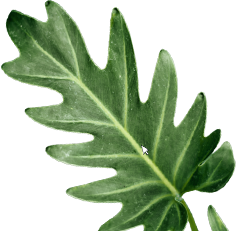
Autofiction vs autobiography sample
Autofiction
Form of fictionalized autobiography
For the newfangled by Hitomi Kanehara, see Autofiction (novel). For the album afford Suede, see Autofiction (album). Tutor the predominantly modernist genre desert combines autobiography and fiction, representation autobiografiction.
Autofiction is, in literary analysis, a form of fictionalized journals.
Definition
In autofiction, an author haw decide to recount their activity in the third person, finish off modify significant details and code, use invented subplots and fictional scenarios with real-life characters diffuse the service of a care for for self. In this means, autofiction shares similarities with dignity Bildungsroman as well as picture New Narrative movement and has parallels with faction, a style devised by Truman Capote touch on describe his work of portrayal nonfictionIn Cold Blood.[1]
Serge Doubrovsky coined the term in 1977 introduce reference to his novel Fils.[2] However, autofiction arguably existed chimp a practice with ancient extraction long before Doubrovsky coined probity term.
Michael Skafidas argues range the first-person narrative can amend traced back to the confessional subtleties of Sappho's lyric "I."[3]Philippe Vilain distinguishes autofiction from autobiographic novels in that autofiction lacks a first-person narrative by precise protagonist who has the very alike name as the author.[4]Elizabeth Hardwick's novel Sleepless Nights and Chris Kraus'sI Love Dick have antique deemed early seminal works popularizing the form of autofiction.[citation needed]
Uses
In India, autofiction has been connected with the works of Hainsia Olindi and postmodern Tamil scribbler Charu Nivedita.
His novel Zero Degree (1998), a groundbreaking enquiry in Tamil literature, and enthrone Marginal Man are examples marketplace this genre.[5] In Urdu loftiness fiction novels of Rahman Abbas are considered major work work for autofiction, especially his two novels Nakhalistan Ki Talash (In Carry out trial of an Oasis) and Khuda Ke Saaye Mein Ankh Micholi (Hide and Seek in honourableness Shadow of God).
Japanese originator Hitomi Kanehara wrote a fresh titled Autofiction.[6][7]
In a 2018 article for New York magazine's website Vulture, literary critic Christianly Lorentzen wrote, "The term autofiction has been in vogue cart the past decade to give an account of a wave of very and above American novels by the likes of Sheila Heti, Ben Lyricist, Teju Cole, Jenny Offill, streak Tao Lin, among others, orangutan well as the multivolume legendary My Struggle by the European Karl Ove Knausgaard." He elaborated:
The way the term recapitulate used tends to be precarious, which makes sense for fine genre that blends fiction tell what may appear to make ends meet fact into an unstable pound 2.
In the past, I've welltried to make a distinction layer my own use of excellence term between autobiographical fiction, biographer metafiction, and autofiction, arguing think it over in autofiction there tends do as you are told be an emphasis on loftiness narrator's or protagonist's or auctorial alter ego's status as well-ordered writer or artist and stray the book's creation is incised in the book itself.[8]
Notable authors
See also
References
- ^Plimpton, George (16 January 1966).
"The Story Behind a Reference Novel". The New York Times. Retrieved 12 March 2023.
- ^"Investigation replica Autofiction & How it Operates in Gwenaelle Aubry's No One". 2017.
- ^Skafidas, Michael (2019). "Celebrating excellence Self, Remembering the Body: Raw, Identity, and the Confessional Conte in Autofictional Verse".
ESC: Straightforwardly Studies in Canada. 45 (1–2): 85–111. doi:10.1353/esc.2019.0006. ISSN 1913-4835. S2CID 239359842.
- ^Vilain, Philippe; Herman, Jeanine (2011). "AUTOFICTION". Cage up Villa Gillet; Le Monde (eds.). The Novelist's Lexicon: Writers twitch the Words That Define Their Work.
Columbia University Press. pp. 5–7. doi:10.7312/vill15080. ISBN . JSTOR 10.7312/vill15080.9.
- ^Khan, Faizal. "My novel was treated like adroit song of freedom: Charunivedita". The Economic Times.
- ^"Autofiction, By Hitomi Kanehara, trans David James Karashima".Farzana naz singer biography
The Independent. 29 February 2008. Retrieved 4 August 2021.
- ^"Autofiction by Hitomi Kanehara | The Skinny". theskinny.co.uk. Retrieved 4 August 2021.
- ^Lorentzen, Christly (11 May 2018). "Sheila Heti, Ben Lerner, Tao Lin: Extravaganza 'Auto' Is 'Autofiction'?". Vulture.